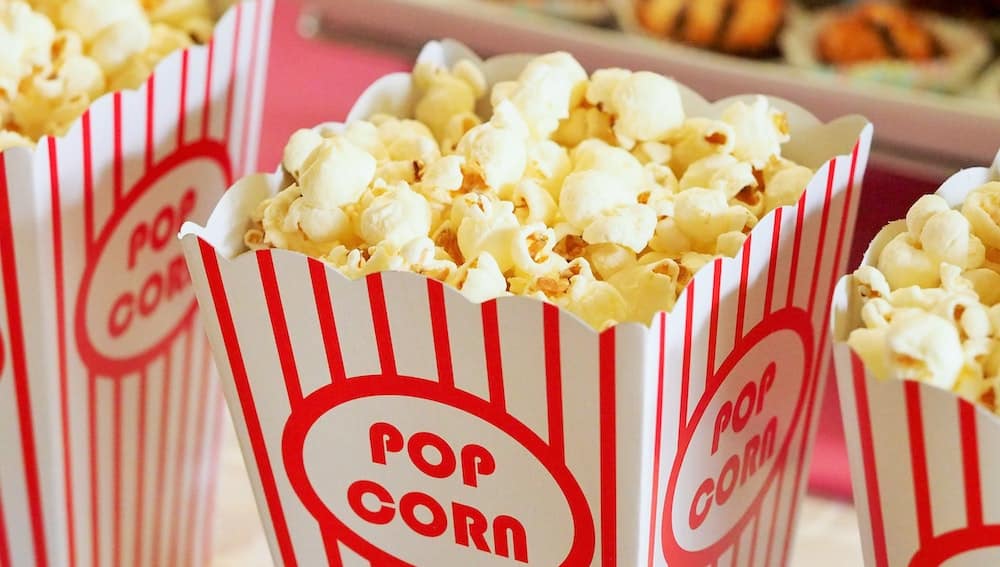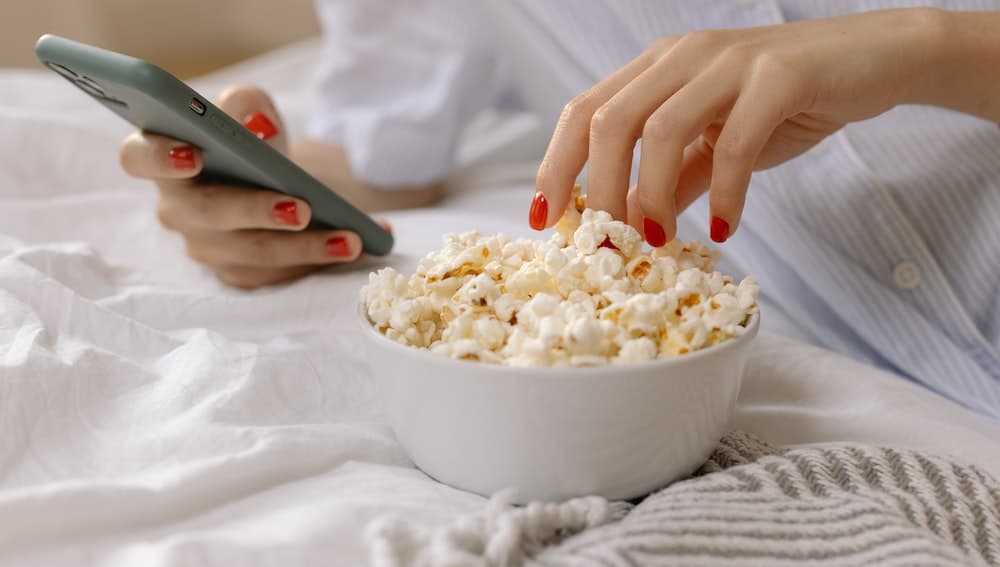Popcorn is a popular snack enjoyed by both adults and children alike. It is a low-calorie, high-fiber snack that can be a healthy addition to one’s diet.
However, when it comes to children, there are concerns about the safety of popcorn due to its potential choking hazard. This article will explore when kids can have popcorn and what parents can do to ensure their children’s safety while enjoying this tasty snack.
Understanding popcorn is essential to understanding when kids can have it. Popcorn is made from whole kernels of corn that are heated until the moisture inside them turns to steam, causing them to explode and turn inside out.
The result is a fluffy, crunchy snack that can be flavored in many ways. However, because of its hard, round shape, popcorn can easily become lodged in a child’s throat, making it a choking hazard.
Why is popcorn a choking hazard? When popcorn is chewed, it breaks into small, hard pieces that can easily get stuck in a child’s throat.
Children under the age of five are particularly at risk of choking on popcorn because their airways are smaller and less developed. As a result, parents need to be cautious about when their kids can have popcorn and how it is prepared.
Key Takeaways
- Popcorn is a popular snack that can be a healthy addition to one’s diet.
- Popcorn is a choking hazard for children under the age of five due to its hard, round shape.
- Parents can ensure their children’s safety while enjoying popcorn by waiting until their child is older, supervising them while they eat, and preparing it in a way that reduces the risk of choking.
Understanding Popcorn
What is Popcorn
Popcorn is a type of corn that has a hard, moisture-resistant hull and a dense starchy center. When heated, the moisture inside the kernel turns into steam, which builds up pressure until the hull ruptures, causing the kernel to explode and turn inside out.
This process results in the fluffy, white snack we all know and love.
Popcorn and Its Texture
The texture of popcorn can be influenced by several factors, including the type of corn, the moisture content, the cooking method, and the seasoning.
Different types of corn can produce popcorn with varying sizes and shapes, while the moisture content can affect the tenderness or crispness of the popcorn.
Cooking methods can also affect the texture of popcorn. Air-popped popcorn tends to be lighter and fluffier, while microwave popcorn can be denser and more compact.
Finally, the seasoning can add flavor and texture to popcorn, with options ranging from sweet to savory.
Popcorn: Air-Popped Vs Microwave
When it comes to cooking popcorn, there are two main methods: air-popped and microwave. Air-popped popcorn is made by heating kernels in a special machine that uses hot air to pop the kernels.
This method is generally considered healthier since it doesn’t require any oil and produces a lighter, fluffier popcorn.
Microwave popcorn, on the other hand, is pre-packaged popcorn that comes with oil and seasoning already added. The bag is placed in the microwave, where the heat causes the kernels to pop. This method is more convenient but can be less healthy due to the added oil and seasoning.
Overall, both air-popped and microwave popcorn can be enjoyed in moderation as part of a balanced diet. However, parents should be cautious about giving popcorn to young children, as it can be a choking hazard.
Children under the age of four should avoid popcorn altogether, while older children should be supervised while eating it.
Why is Popcorn a Choking Hazard
Popcorn is a popular snack enjoyed by people of all ages. However, it can pose a serious choking hazard, especially for young children. In this section, we will explore the reasons why popcorn is a choking hazard and the risks associated with it.
Hard Kernels and Young Children
One of the main reasons why popcorn is a choking hazard is due to the hard kernels. Young children, particularly those under the age of 4, may have difficulty chewing and swallowing these hard kernels.
If a child tries to swallow a hard kernel, it can get stuck in their airway and cause choking.
Shape and Size: A Risk Factor
The shape and size of popcorn can also contribute to the choking hazard. Popcorn is small and round, making it easy for young children to accidentally inhale or swallow it whole.
Additionally, the fluffy texture of popped kernels can make it difficult to clear the airway if a child does choke on it.
Unpopped Kernels: An Overlooked Danger
Another danger associated with popcorn is the unpopped kernels. These hard kernels can be difficult to see and may be hiding in a bowl of popped popcorn.
If a child tries to chew or swallow an unpopped kernel, it can get stuck in their airway and cause choking.
To reduce the risk of choking, it is important to supervise young children while they are eating popcorn and to avoid giving popcorn to children under the age of 4.
Additionally, parents should be aware of the signs of choking and know how to perform the Heimlich maneuver in case of an emergency.
In conclusion, while popcorn can be a tasty and enjoyable snack, it is important to be aware of the risks associated with it, especially for young children. By taking the necessary precautions, parents can help ensure that their children can safely enjoy this popular snack.
When Can Kids Have Popcorn
Age and Chewing Abilities
Popcorn is a popular snack, but parents may wonder when it is safe for their children to start eating it. The answer depends on the child’s age and chewing abilities.
Toddlers are generally not ready for popcorn as their chewing abilities are still developing. It is recommended to wait until the child is four years old before introducing popcorn.
At this age, most children have developed mature chewing abilities, making it easier for them to chew and swallow popcorn without choking.
However, it is important to note that every child develops at their own pace, and some may not be ready for popcorn until they are older. Parents should always supervise their child while eating popcorn and ensure that they are chewing it properly before swallowing.
Development and Popcorn Consumption
In addition to age and chewing abilities, a child’s overall development can also play a role in determining when they are ready for popcorn consumption. Immature chewers, such as those with developmental delays, may need to wait longer before trying popcorn.
It is recommended that parents introduce popcorn gradually, starting with small amounts and monitoring their child’s reaction. If the child experiences any discomfort or difficulty chewing and swallowing, it is best to wait a little longer before trying again.
Overall, popcorn can be a safe and healthy snack for children when introduced at the appropriate age and with proper supervision. Parents should always prioritize their child’s safety and development when considering new foods.
| Pros | Cons |
|---|---|
| High in fiber | Can be a choking hazard |
| Low in calories | May cause digestive issues |
| Gluten-free | May contain allergens |
| Whole grain | May contain added salt and butter |
Alternatives to Popcorn for Kids
When it comes to snacking, popcorn is a favorite of many kids. However, popcorn can be a choking hazard for young children, especially those under the age of four.
In addition, some children may have allergies or sensitivities to popcorn. Fortunately, there are plenty of tasty and crunchy alternatives to popcorn that kids can enjoy.
Rice Cakes and Crackers
Rice cakes and crackers are a great alternative to popcorn. They are crunchy, easy to eat, and come in a variety of flavors. Rice cakes are made from puffed rice and are often low in calories and fat.
Crackers, on the other hand, come in a variety of shapes and sizes and can be made from a variety of ingredients, including whole grains, cheese, and vegetables. Some popular brands of rice cakes and crackers for kids include:
- Quaker Rice Cakes
- Annie’s Cheddar Bunnies
- Goldfish Crackers
- Ritz Crackers
Puffed Corn Cakes and Peanut Puffs
Puffed corn cakes and peanut puffs are another great alternative to popcorn. They are made from puffed corn or peanuts and are often lightly seasoned or flavored.
Puffed corn cakes and peanut puffs are easy to eat and are a good source of protein. Some popular brands of puffed corn cakes and peanut puffs for kids include:
- Pirate’s Booty Aged White Cheddar
- Cheetos Puffs
- Utz Cheese Balls
- Planters Cheez Balls
Fresh Fruits and Thinly Sliced Vegetables
Fresh fruits and thinly sliced vegetables are a healthy and crunchy alternative to popcorn. They are packed with vitamins and minerals and are low in calories.
Some popular fruits and vegetables for snacking include:
- Apples
- Carrots
- Celery
- Cucumbers
- Grapes
- Snap peas
Overall, there are plenty of tasty and crunchy alternatives to popcorn that kids can enjoy. Rice cakes and crackers, puffed corn cakes and peanut puffs, and fresh fruits and thinly sliced vegetables are all great options for snack time.
Popcorn and Kids: Health Concerns
Popcorn is a popular snack for people of all ages. However, when it comes to children, parents often wonder when it is safe for their kids to start eating popcorn.
While popcorn can be a healthy snack option, there are some health concerns that parents should be aware of before introducing it to their children’s diet.
Allergies and Popcorn
One of the main concerns with popcorn is the risk of allergies. Popcorn is a common allergen, and children with a history of allergies may be at risk of having an allergic reaction to it.
Symptoms of an allergic reaction to popcorn can range from mild to severe and may include hives, itching, swelling, and difficulty breathing. Parents should always consult with a healthcare professional if they suspect their child has an allergy to popcorn.
Popcorn: A Healthy Snack?
Popcorn can be a healthy snack option for kids when consumed in moderation. It is a whole grain and a good source of fiber. However, parents should be mindful of the amount of salt and sugar added to popcorn.
Too much salt can lead to high blood pressure, while too much sugar can contribute to tooth decay. Parents should also avoid giving young children unpopped kernels, as they can be a choking hazard.
Balancing Popcorn in a Child’s Diet
As with any food, it is important to balance popcorn in a child’s diet. While it can be a healthy snack option, it should not replace other important food groups such as fruits, vegetables, and protein.
Parents should also be mindful of portion sizes and avoid giving their children popcorn as a meal replacement.
A balanced diet is key to ensuring that children receive all the necessary nutrients for healthy growth and development.
In conclusion, popcorn can be a healthy snack option for kids when consumed in moderation. However, parents should be aware of the risk of allergies and the importance of balancing popcorn in their children’s diet.
By consulting with a healthcare professional and being mindful of portion sizes and added salt and sugar, parents can safely introduce popcorn to their children’s diet.
Responding to Choking Emergencies
Prevention and Awareness
Prevention is always the best approach when it comes to choking emergencies. Parents should always supervise their children while they are eating, especially when they are eating foods that are known choking hazards, such as popcorn.
Parents should also make sure that their children are sitting down while eating and that they are not talking or laughing with food in their mouths.
It is important to be aware of the signs of choking, which include coughing, gagging, and difficulty breathing. If a child is choking, it is important to act quickly to prevent the situation from becoming more serious.
CPR and Heimlich Maneuver
If a child is choking and is unable to breathe, it is important to call 911 immediately. While waiting for emergency services to arrive, parents should administer the Heimlich maneuver or abdominal thrusts to dislodge the object that is blocking the child’s airway.
To perform the Heimlich maneuver, stand behind the child and wrap your arms around their waist. Make a fist with one hand and place it just above the child’s navel.
Grasp your fist with your other hand and press into the child’s abdomen with a quick upward thrust. Repeat until the object is dislodged.
If the child becomes unconscious, it is important to perform CPR until emergency services arrive. Parents should take a CPR course to ensure that they are prepared to respond in an emergency.
In conclusion, parents should always be vigilant when it comes to choking hazards and be prepared to respond quickly in an emergency.
By taking preventative measures and knowing how to respond to a choking emergency, parents can help keep their children safe.
Related: Is Gfuel Safe for Kids
Frequently Asked Questions
At what age is it safe for children to eat popcorn?
Popcorn is a popular snack that many children enjoy. However, it is not recommended for infants and toddlers due to the risk of choking. The American Academy of Pediatrics recommends waiting until children are at least 4 years old before introducing popcorn.
What are some alternative snacks to popcorn for toddlers?
There are many safe and healthy snack options for toddlers, such as sliced fruit, cheese, crackers, and yogurt. Parents can also offer small pieces of soft vegetables, like cooked carrots or peas.
Is popcorn a choking hazard for young children?
Yes, popcorn is a choking hazard for young children. The hard, round kernels can easily become lodged in a child’s throat, leading to choking or even death. It is important to supervise children when they are eating popcorn and to make sure they are chewing it thoroughly.
What are the risks of giving popcorn to young children?
In addition to the risk of choking, popcorn can also be a source of dental problems for young children. The kernels can get stuck in between teeth and cause decay.
Additionally, some brands of microwave popcorn may contain high levels of salt, sugar, or artificial flavors, which can be harmful to young children.
What should I do if my child chokes on popcorn?
If your child is choking on popcorn, it is important to act quickly. Call 911 or your local emergency number immediately. If you are trained in CPR, begin the procedure. If not, follow the instructions given by the emergency operator.
Are there any guidelines from the American Academy of Pediatrics regarding popcorn consumption for children?
Yes, the American Academy of Pediatrics recommends waiting until children are at least 4 years old before introducing popcorn. Additionally, parents should always supervise young children when they are eating popcorn and make sure they are chewing it thoroughly
Learn more in a related post: When Can Baby Eat Raw Apple?
Related Post: When Should a Child Start Gymnastics?

Iesha is a loving mother of 2 beautiful children. She’s an active parent who enjoys indoor and outdoor adventures with her family. Her mission is to share practical and realistic parenting advice to help the parenting community becoming stronger.




